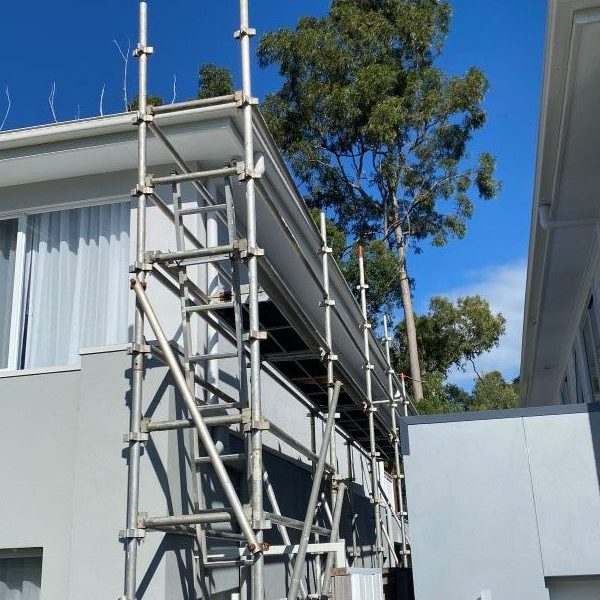Enhancing Scaffold Load Capacity: Essential Guidelines for Safety and Regulatory Compliance in the Construction Sector
Scaffold load capacity represents a critical aspect that indicates the maximum weight that a scaffold can safely sustain during various construction operations. It is vital to recognise that this significant factor encompasses three primary categories of loads that require meticulous attention:
- The weight of the scaffold itself, commonly known as the dead load
- The weight of personnel, tools, and materials placed on the scaffold, referred to as the live load
- External forces such as wind, rain, or vibrations impacting the structure, classified under environmental load
Grasping the implications of these loads is of utmost importance, as they inherently affect the overall stress exerted on scaffolds during their operational phase. Adhering to these assessments is not merely a recommendation; it is a legal obligation under Australian law to ensure the safety and well-being of all personnel involved in the construction process.

Comprehensive Instructions for Effectively Using Our Scaffold Load and Height Calculator
While a universal formula may not apply to every scaffold configuration, our scaffold calculator serves as a user-friendly tool that simplifies the acquisition of accurate estimates by clarifying essential variables. This resource is specifically designed for residential builders, homeowners, and scaffold hire professionals who operate in accordance with the regulations established by Australian OHS standards.
Step 1: Identify the Type of Work to Be Conducted
Determine the nature of the tasks, which may encompass activities such as roof restoration, exterior painting, solar panel installation, cladding, or rendering.
Step 2: Indicate the Number of Workers
As an example, you might input two workers who will be operating simultaneously on the scaffold platform.
Step 3: Estimate the Weight of Materials to Be Used
This could involve approximately 120 kg worth of rendering materials or tools necessary for the execution of the project.
Step 4: Specify the Height of the Scaffold Platform
For instance, the height might be adjusted to 4.5 metres above ground level.
Upon entering this information, the calculator will provide a recommended scaffold configuration that includes:
- The appropriate duty class (e.g., Light, Medium, or Heavy)
- An estimate of the Safe Working Load (SWL) per bay
- The recommended scaffold type (e.g., aluminium tower or steel frame)
- Essential safety features required (such as guardrails, soleplates, and stabilisers)
- Compliance considerations related to height (e.g., tie-offs required above 4 metres)
Understanding the Complexity Behind the Absence of a Universal Load Formula for Scaffolding
Although the scaffold calculator provides a practical means for generating estimates, scaffolders and engineers do not depend exclusively on a singular formula due to several critical factors:
- Scaffold systems can differ significantly based on their material composition and design (including aluminium, steel, modular, and tube-and-coupler)
- The intended use can greatly influence the load capacity (for example, painting versus masonry)
- Various manufacturers offer differing platform strength and component ratings, resulting in inconsistencies
Standard Industry Approach for Calculating Safe Working Load (SWL)
Professionals frequently consult the following formula as a fundamental guideline for estimation purposes:
Safe Working Load (SWL) per bay = (Platform Load Rating × Safety Factor) – Scaffold Component Weight
Illustrative Example:
- A platform rated to support a maximum load of 600 kg
- Applying a 4:1 safety margin: utilising only 25% of the rating results in 150 kg
- Subtracting the weight of the scaffold structure, which amounts to 100 kg
- The resultant usable working load is 50 kg (note that this is a conservative estimate and often does not reflect actual planning)
Given the complexities of real-world conditions, professional scaffolders typically adhere to manufacturer guidelines, engineering tables, and local regulations rather than relying solely on this simplified formula.

Key Best Practices Adopted by Professionals for Scaffold Assessments
Professional scaffold evaluations generally encompass the following fundamental components:
- Reviewing manufacturer load data and verified span ratings for accuracy
- Calculating the cumulative live, dead, and environmental loads to assure safety
- Ensuring adherence to AS/NZS duty class specifications to meet industry standards
- Acquiring engineering sign-off for any custom or elevated scaffold configurations
- Conducting comprehensive visual and structural inspections prior to scaffold use to identify potential hazards
Customising Scaffold Practices to Suit Environmental Conditions and Site-Specific Variables
Mitigating Wind Exposure in Coastal Queensland
In areas classified under wind zones N3 and N4, the lateral forces impacting scaffolds are significantly increased. Consequently, scaffolds must be secured at closer intervals, and additional bracing or shade cloth may be necessary, particularly during high-wind seasons, to ensure structural stability.
Considerations for Soil and Ground Conditions
In instances of unstable or sloped soil, it is crucial to employ soleplates and adjustable base jacks to enhance the stability of the scaffold. Furthermore, sites with varying elevations may necessitate the implementation of levelled bay systems to maintain a safe working environment.
Regulatory Requirements for Work Exceeding Four Metres
In Queensland, any platform that exceeds four metres in height requires thorough inspection and certification. A scaffold handover certificate must be obtained as stipulated under the Work Health and Safety Regulation 2011, ensuring compliance with established safety standards.
Essential Safety Regulations to Follow Diligently
- Work Health and Safety Regulation 2011 (QLD)
- Managing the Risk of Falls at Workplaces (Code of Practice, 2021)
- AS/NZS 1576 and AS/NZS 4576 Standards for scaffold safety
- High Risk Work Licence (HRWL) is mandatory for any scaffold setup above four metres
Site supervisors bear the responsibility of conducting regular inspections, especially following adverse weather conditions or significant alterations to scaffold height or load, ensuring ongoing compliance with safety regulations.
Illuminating Case Study: Scaffold Application in Robina
In a recent project within Gold Coast, a homeowner in Robina required scaffolding to repaint and render the exterior wall of a two-storey building. The working height for this undertaking was determined to be five metres, with two tradespeople utilising approximately 200 kg of rendering materials and tools throughout the project.
By employing our scaffold calculator, the recommended configuration was as follows:
- Scaffold class: Medium Duty, which is suitable for the task
- System type: Steel frame with timber planks, ensuring durability
- Additional safety measures: Comprehensive edge protection, soleplates for soft earth conditions, and wind mesh to mitigate wind exposure
The scaffold successfully passed all requisite inspections and was compliant with Queensland’s OHS regulations, resulting in no downtime during the entire duration of the project.
Critical Considerations Regarding Scaffold Height and Load Capacity Calculations
Determining scaffold height and load capacity should never be approached as mere guesswork. In residential projects, this meticulous process is essential for ensuring safety, managing costs effectively, and achieving compliance with local regulations.
Given the specific requirements pertinent to Australian conditions, particularly in southeast Queensland, we strongly recommend obtaining a precise scaffolding quote and ensuring that all installations are conducted by qualified professionals.
Reach Out to CanDo Scaffolding Hire for Expert Advice and Services
For additional information regarding our services, please do not hesitate to contact us at 1300 226 336 or send an email to theguys@cando.com.au at your convenience.
We provide a comprehensive range of scaffolding solutions, including void protection platforms and roof edge protection, tailored to meet the unique needs of any residential or light commercial construction project.
Understanding Scaffold Load Capacity for Residential Projects
The Article: Scaffold Load Capacity Insights for Residential Projects first appeared on https://writebuff.com
The Article Scaffold Load Capacity for Residential Construction Projects Was Found On https://limitsofstrategy.com

